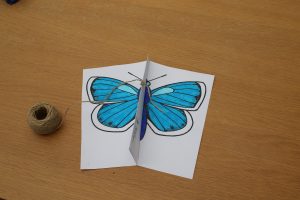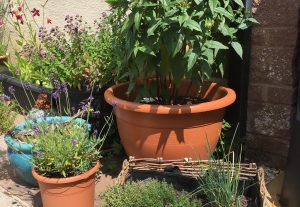With the summer holidays fast approaching, leading wildlife charity Butterfly Conservation is sharing seven really wild ways to keep the kids entertained this year, come rain or shine!
1. Count butterflies for the Big Butterfly Count
Take part in the world’s biggest butterfly survey this July and August. It only takes 15 minutes, is fun and free, and helps scientists understand how butterflies are doing across the UK.
Last year, for the first time ever, the most counted butterfly was the Red Admiral (a whopping 248,077 were recorded!) – will it keep the top spot? Help us find out…
You can take part in the Big Butterfly Count as many times as you like, wherever you like between 12 July and 4 August 2024.
Visit www.bigbutterflycount.org for more info and to download the free app.
2. Make and fly a butterfly kite
Here’s a fun craft project that will get your little ones outside in no time! This simple but effective butterfly kite craft activity is easy to make and requires few materials. No breeze? No problem. Try running with the kite behind you to get it to soar (or should we say flutter?).
Head to: www.butterfly-conservation.org/discover-and-learn/activities-and-resources/make-a-butterfly-kite
3. Learn about butterfly body parts
Ever wondered how many legs a butterfly has or if they can smell? Spark little ones’ curiosity this summer holidays with some fun facts about butterflies before heading out to see what you can spot.
Watch Butterfly Conservation’s video all about butterfly body parts to find out more: www.butterfly-conservation.org/discover-and-learn/activities-and-resources/butterfly-body-parts
4. Look out for caterpillar clues
Spotting caterpillars can be tricky. While a few bright and colourful ones stand out, most are the masters of disguise! From looking for munched leaves to heading out under the cover of darkness, check out our top tips on how to spot caterpillars and go on a caterpillar hunt with your little ones.
Discover more here: www.butterfly-conservation.org/discover-and-learn/activities-and-resources/how-to-spot-caterpillars
5. Create wild art from scavenged items
Use fallen leaves, seeds and other natural items to make you own piece of Wild Art. Simply choose your canvas – a tree stump, the forest floor or even a picnic table – and go on a scavenger hunt for fallen natural materials. Place them together to make a beautiful, wild picture.
Remember to only pick things that have already fallen, leaving the growing flowers, leaves and grasses for wildlife to enjoy.
For inspiration see our activity page: www.butterfly-conservation.org/discover-and-learn/activities-and-resources/wild-art
6. Grow a Wild Space in a pot for butterflies and moths
Growing plants in pots can provide valuable food for butterflies and moths in any outdoor space whether it be a patio, balcony, rented garden, or even a front doorstep! The great news is there are lots of plants to choose from that are child-friendly, liked by butterflies, and will thrive in a pot – as long as you remember to water them!
Here are a few of Butterfly Conservation’s top picks:
Nasturtium – this edible plant produces bright, colourful flowers and the leaves are irresistible to the caterpillars of the Large and Small White butterfly. They are really easy to grow from seed and the seeds are a good size for small hands to handle too.
Herbs – herbs make fantastic pot plants and can be enjoyed by humans and wildlife alike. Chives, Marjoram, Thyme, and Bergamot all produce flowers that insects love and are usually easy to find as seeds or plants from a garden centre, supermarket or online.
Salvia – this attractive plant grows well in containers and there are lots of different sizes and colours to choose from. The flowers are loved by pollinators and their bushy leaves provide shelter for many other insects.
For more ideas visit www.wild-spaces.co.uk
7. Butterfly bake-off
Perfect for a rainy day, this simple butterfly cake recipe will keep your very hungry caterpillars busy in the kitchen and provide a tasty treat for the whole family!








